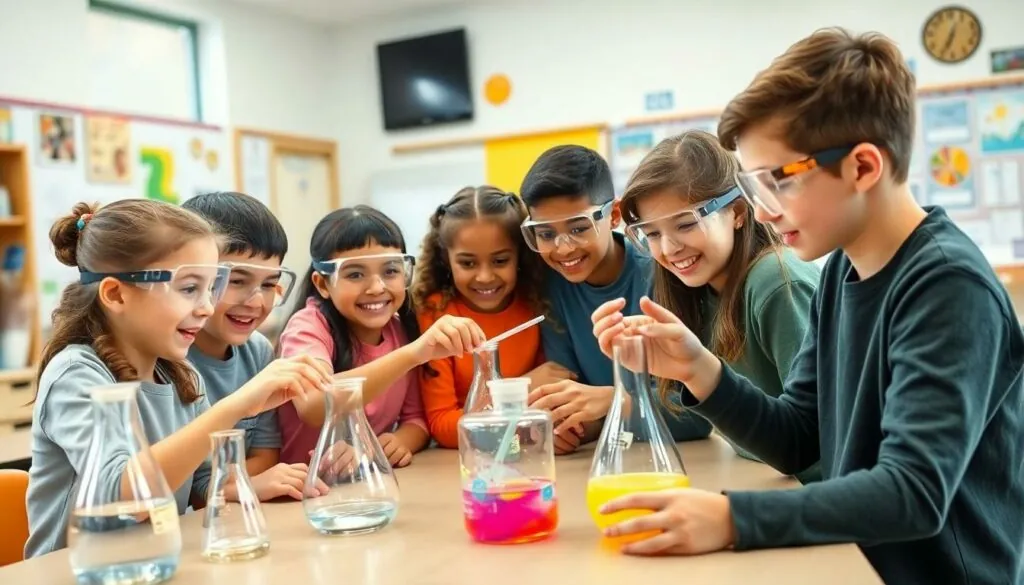Table of Contents
ToggleSTEM clubs are where curiosity meets creativity, and they’re not just for the science geeks anymore. Whether it’s building a rocket or coding a robot, these clubs offer a playground for young minds to explore the wonders of science, technology, engineering, and math. But let’s face it—coming up with fresh and exciting ideas can feel like trying to find a needle in a haystack.
Overview of STEM Club Ideas
STEM clubs offer various activities that encourage creativity and critical thinking. Building rockets engages students with both physics and engineering concepts. Coding robots immerses individuals in programming and automation, fostering teamwork and problem-solving skills.
Hands-on experiments in areas like chemistry or biology create excitement about scientific exploration. Designing and constructing simple machines teaches mechanics and design principles. Students benefit from collaborative challenges, such as bridge-building contests, which promote engineering skills.
Hosting guest speakers from STEM fields exposes club members to real-world applications. Field trips to museums or laboratories enhance experiential learning, connecting classroom knowledge to practical situations. Each activity contributes to their understanding of how STEM principles operate in daily life.
Monthly themes can guide activities, keeping members engaged. Planning events like science fairs allows members to showcase projects and innovations. Incorporating competitions can motivate students to enhance their skills further.
Providing a platform for community service projects strengthens bonds within the group while applying STEM skills. Working on environmental sustainability projects demonstrates the impact of STEM on global issues. Teams can also create awareness campaigns focusing on health or technology topics relevant to their community.
By integrating art into STEM activities, clubs can explore STEAM, promoting creativity alongside analytical skills. Students might design and build prototypes for inventions or create projects that merge technology with artistic expression. Fostering diversity in activities ensures that all members find interests that resonate with them.
Ultimately, an array of STEM club ideas empowers students to explore their passions, build skills, and work collaboratively on fascinating projects.
Engaging STEM Activities
STEM clubs thrive on innovative and hands-on activities that spark curiosity. Members actively participate in unique projects, ensuring they build critical skills along the way.
Hands-On Experiments
Chemistry experiments engage students with exciting reactions. Simple projects like creating slime or homemade volcanoes illustrate fundamental principles. Biology workshops involve building models of cells or conducting dissections. Physics challenges often include experiments with sound waves or magnetism for real-world applications. Members also explore environmental science by testing water quality or recycling materials. Each experiment promotes teamwork and fosters a deeper understanding of scientific concepts.
Technology Projects
Members create various tech-based projects that combine coding and engineering. Developing websites or apps allows for practical programming experience. Robotics competitions challenge participants to design and build functioning robots. Incorporating 3D printing introduces students to design software and manufacturing techniques. Digital storytelling projects promote creativity while enhancing technological skills. Each project not only reinforces learning but also prepares members for future opportunities in a tech-driven world.
STEM Club Themes
STEM club themes provide a structured approach to engaging activities. Members can immerse themselves in various topics, expanding their knowledge while fostering collaboration.
Environmental Science
Environmental science themes emphasize awareness and sustainability. Club members can conduct projects focused on local ecology, such as monitoring water quality in nearby rivers or participating in community cleanup initiatives. They can engage in experiments that demonstrate the impact of pollution on ecosystems, using hands-on activities like building eco-friendly models. Workshops on renewable energy sources, like solar and wind power, can ignite discussions about climate change and conservation. Students gain practical skills while contributing positively to their communities.
Robotics and Coding
Robotics and coding themes spark excitement among club members. They can design and program robots to perform specific tasks, such as navigating obstacle courses or completing simple challenges. Workshops on coding languages, like Python or Scratch, invite participants to create their own games or applications. Team competitions in robotics, such as First Robotics or VEX competitions, promote collaboration and teamwork. Members build programming skills while developing critical thinking abilities, preparing them for the technology-driven future.
Community Involvement
Community involvement enriches STEM club experiences by connecting students with local resources and real-world challenges. Engaging with the community fosters valuable partnerships.
Collaborations with Local Organizations
Collaborating with nonprofits creates opportunities for students to participate in projects that address community needs. Organizations often provide mentorship and support, enhancing learning experiences. Schools can partner with local science museums, universities, or tech companies to offer workshops and resources. Partnerships may lead to special events or challenges, motivating students to apply their skills in meaningful ways. Local businesses can sponsor equipment or competitions, fostering relationships that encourage ongoing collaboration.
Hosting Community Events
Hosting events like science fairs or coding workshops engages the community and showcases students’ talents. Members can invite families and neighbors to participate in hands-on activities that promote STEM learning. Organizing community clean-up events or sustainability demonstrations raises awareness while involving everyone in environmental efforts. Events often allow students to present projects, sharing knowledge with attendees and inspiring others. Through these events, STEM clubs emphasize their commitment to making a positive impact within the community.
Conclusion
STEM clubs offer a vibrant platform for young minds to explore their interests and develop essential skills. By incorporating diverse activities and themes, these clubs can foster creativity and collaboration. Engaging with the community through projects and partnerships enhances the learning experience while making a positive impact.
As students dive into hands-on experiments and innovative challenges, they not only gain knowledge but also build confidence in their abilities. Ultimately, the right mix of activities and community involvement can transform STEM clubs into dynamic environments where students thrive and discover their potential.


